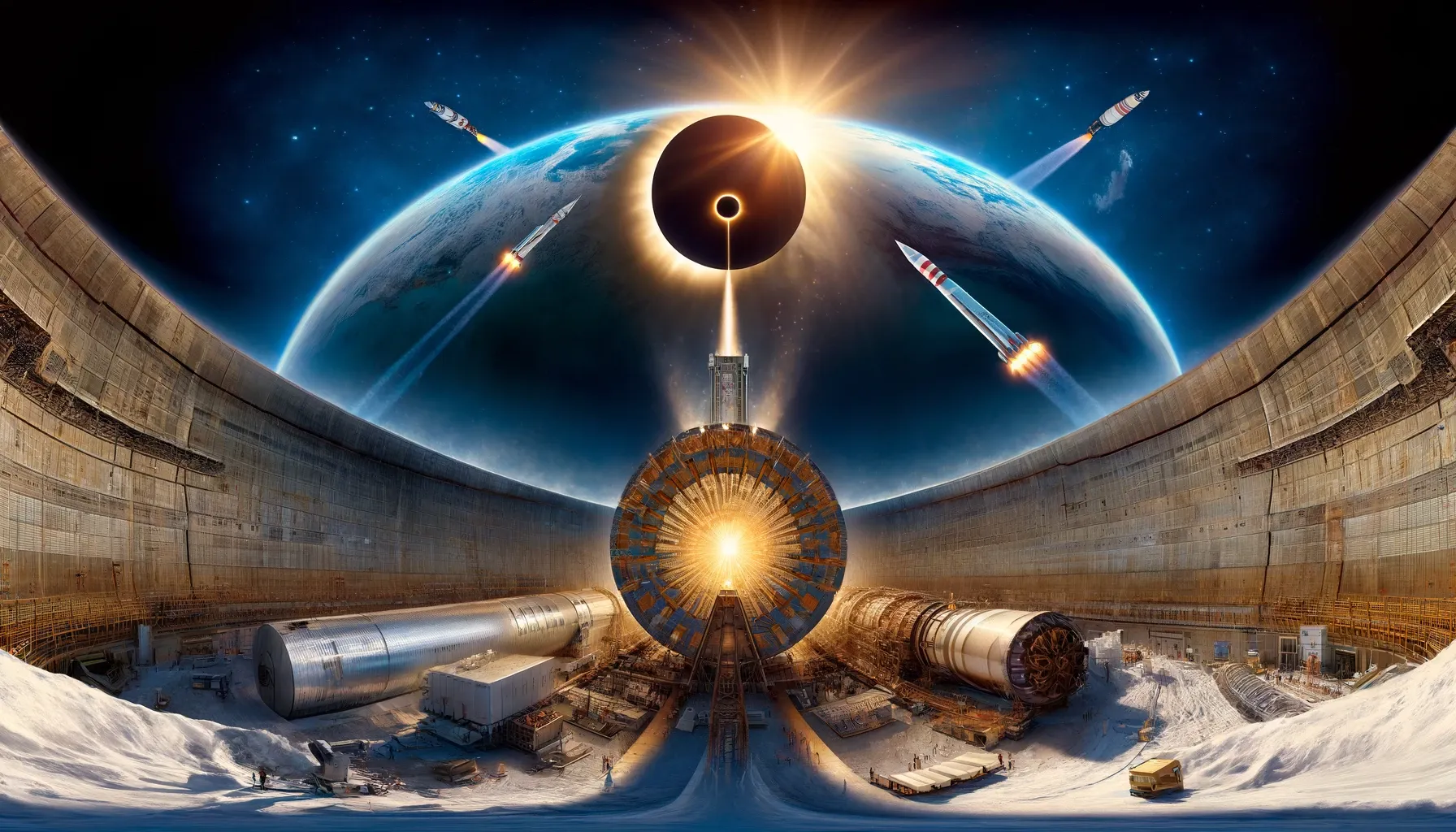April 2024: Bridging Cosmic Mysteries and Earth’s Frontiers Through NASA’s Eclipse Experiment and CERN’s LHC
In the shadow of celestial phenomena and the forefront of human ingenuity, two groundbreaking events are set to captivate the global community in April 2024. As the Earth prepares for a total solar eclipse, an unparalleled scientific endeavor is poised to unfold, harnessing the eclipse’s unique conditions to probe
In the shadow of celestial phenomena and the forefront of human ingenuity, two groundbreaking events are set to captivate the global community in April 2024. As the Earth prepares for a total solar eclipse, an unparalleled scientific endeavor is poised to unfold, harnessing the eclipse’s unique conditions to probe the mysteries of our universe and the robustness of our technological infrastructure. Meanwhile, at the border of France and Switzerland, the European Organization for Nuclear Research (CERN) gears up for a monumental experiment with the Large Hadron Collider (LHC), aiming to unravel the fabric of the cosmos. This article delves into these twin narratives of exploration and discovery, showcasing the ambitious spirit of scientific inquiry and the boundless potential of collaboration.
Solar Eclipse and the Quest for Ionospheric Understanding
On April 8, 2024, the world will turn its gaze upwards as the moon casts its shadow across the Earth, offering a rare spectacle of a total solar eclipse visible across North America. Beyond the awe-inspiring visual phenomenon, NASA has seized this opportunity to launch three sounding rockets as part of the Atmospheric Perturbations around Eclipse Path (APEP) project. This initiative aims to study the effects of the eclipse on Earth’s ionosphere, a critical layer of our atmosphere that facilitates radio communication by reflecting and refracting signals back to the surface. The temporary darkness brought about by the eclipse offers a unique laboratory for scientists to investigate how the sudden change in solar radiation affects the ionosphere’s behavior, potentially impacting communication networks reliant on this atmospheric layer.
CERN’s Large Hadron Collider: Peering into the Primordial Universe
Concurrently, the scientific community casts its attention toward CERN, home to the LHC, often dubbed the “Big Bang machine.” As the most powerful particle accelerator ever built, the LHC is set to resume its exploration of the fundamental building blocks of the universe. By smashing protons together at near-light speeds, scientists aim to recreate conditions mere moments after the Big Bang, providing insights into the origins and makeup of the cosmos. This endeavor not only represents a quest to confirm the existence of theoretical particles and forces but also serves as a testament to human curiosity and the pursuit of knowledge that transcends boundaries.
Bridging the Gap Between the Cosmic and the Terrestrial
The juxtaposition of these events highlights a dual narrative of humanity’s quest to understand the universe at both the macroscopic and subatomic levels. While the APEP project leverages a natural celestial event to shed light on the ionosphere’s influence on terrestrial communications, CERN’s LHC experiment seeks to unlock the secrets of the universe by examining its smallest components. Together, these endeavors embody the essence of scientific exploration: a relentless drive to push the frontiers of our knowledge, fueled by collaboration, innovation, and an insatiable curiosity about the world around us and beyond.
As April 2024 approaches, the anticipation builds not only for the spectacle of the solar eclipse but also for the potential discoveries that await. These events serve as powerful reminders of our place in the universe and the importance of science in unraveling the mysteries that surround us. Through the lenses of both terrestrial and cosmic inquiry, we are reminded that the pursuit of knowledge is a journey that never ceases, driven by the enduring human spirit of exploration and discovery.





